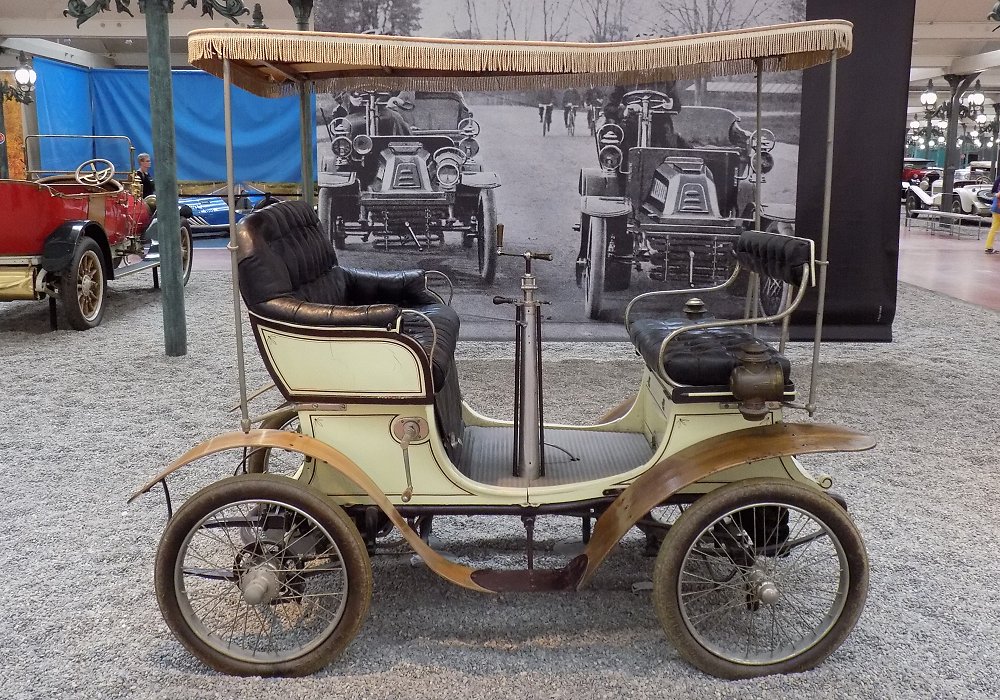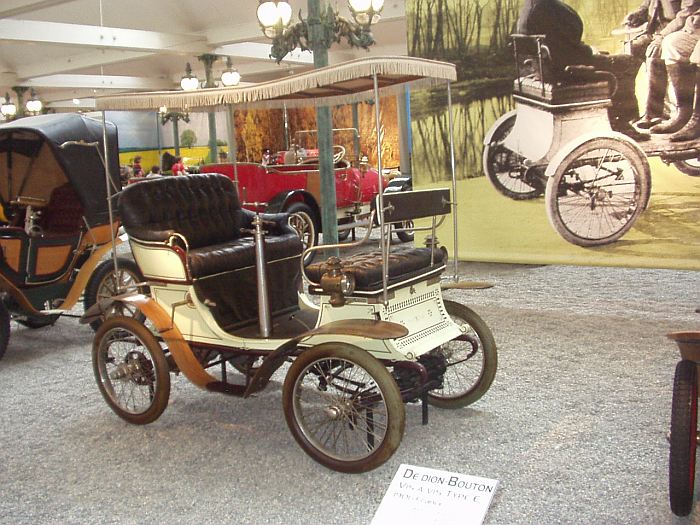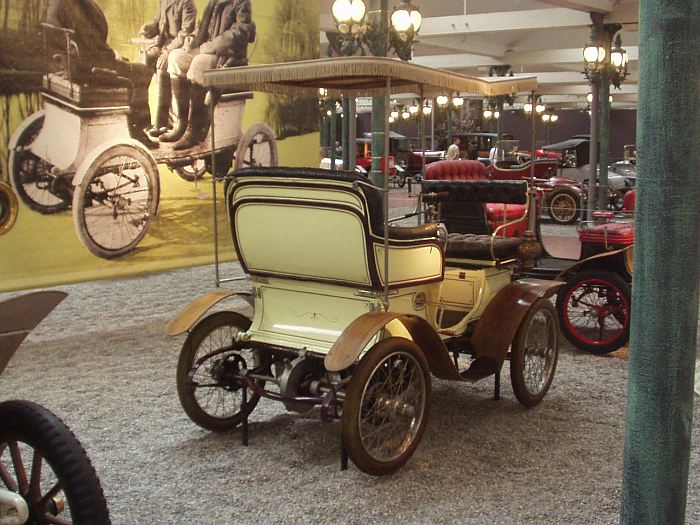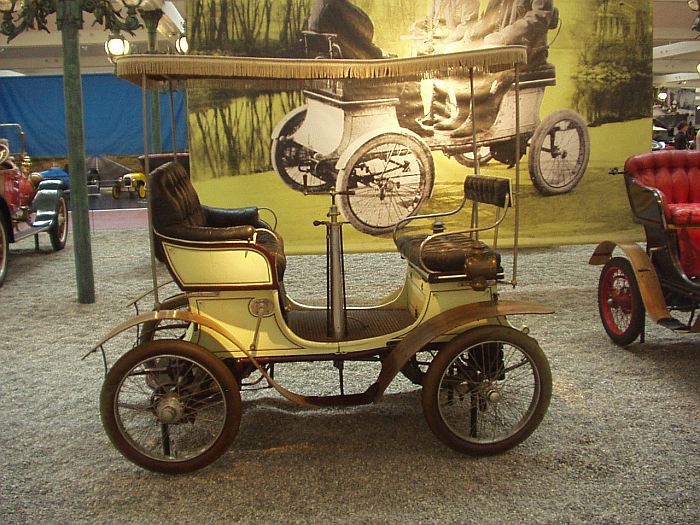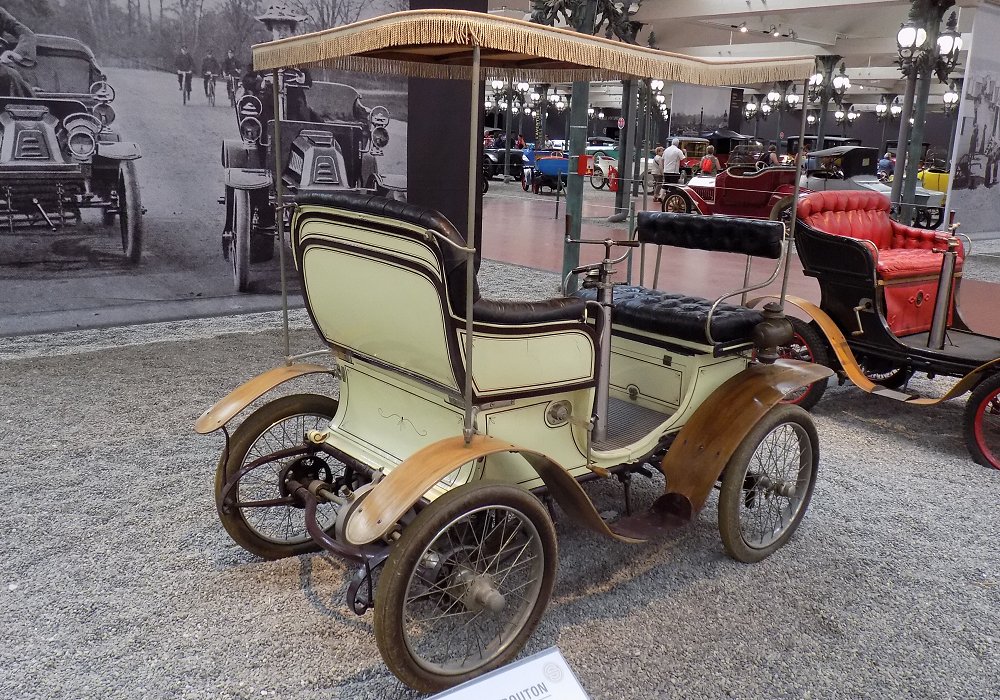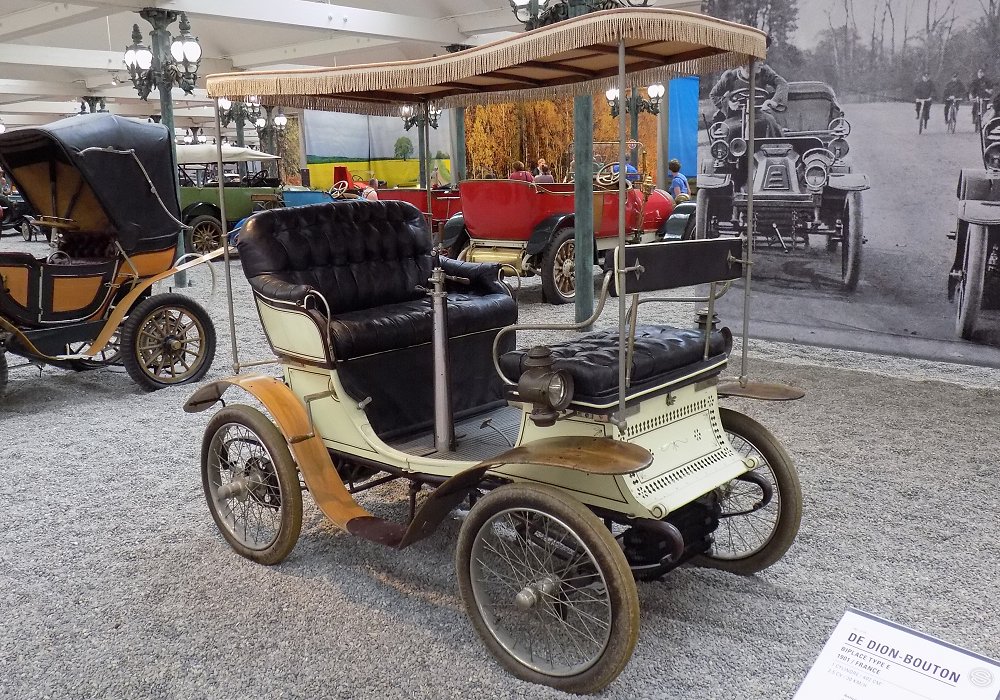Description
The De Dion-Bouton Type L Vis-à-Vis was a compact and refined motorcar produced by the French manufacturer in the early 1900s, during a period when the company was among the most influential forces in the emerging automotive industry. De Dion-Bouton had already earned a strong reputation for their reliable single-cylinder engines and light vehicles, and the Type L was a continuation of their successful small car lineup, offering practical transportation with the grace and formality of carriage-style design.
The Type L was equipped with a single-cylinder petrol engine mounted at the rear, following the De Dion-Bouton tradition. This engine was typically rated between 5 and 6 horsepower, an upgrade from earlier models like the Type G. It was air-cooled and featured automatic inlet and mechanically operated exhaust valves. Ignition was usually provided by a low-tension magneto system, and power was transmitted to the rear wheels through a two-speed gearbox and chain drive. The performance was modest but reliable, with the car achieving speeds up to approximately 40 km/h under favorable conditions.
The defining feature of the Type L was its vis-à-vis body configuration. This style placed the front passengers facing rearward, opposite the driver and rear passenger who faced forward. Such an arrangement was borrowed from the horse-drawn carriage tradition and provided a social, face-to-face seating arrangement that was popular in the early years of motoring. The design was both elegant and functional, particularly for leisurely drives and promenading in town or countryside.
The chassis of the Type L was constructed for lightness and durability, employing a simple ladder frame and solid axles suspended by semi-elliptic leaf springs. This provided reasonable ride comfort, though road surfaces at the time were often poor. The steering was direct and responsive, usually operated by a tiller or early wheel depending on the version, and braking was managed via a transmission brake supplemented by a hand lever acting on the rear wheels.
Although simple by modern standards, the De Dion-Bouton Type L Vis-à-Vis represented a significant advancement in early automotive design. It offered reliable mechanicals, ease of use, and a refined appearance that appealed to the increasingly affluent and adventurous motorists of the Belle Époque. Vehicles like the Type L played an important role in the spread of motoring culture across Europe, bridging the gap between novelty and practicality in personal transportation.
